デザインの力で社会課題を解決し、より良い未来をつくる
インド・ベンガルール「インパクト・デザイン」の取り組み
人々の生活様式や価値観が多様化する現代。「デザインに何ができるのか」「デザインはどこへ向かうべきなのか」を自問自答している人も多いかもしれない。この問いに対する答えとなりうる活動を行っているのが、インド南部の大都市・ベンガルール(旧称:バンガロール)だ。海外の都市やクリエイターとの連携強化を進めるメビックが、その取り組みの一環として開催した「クリエイティブクラスターフォーラム」。インド・デザイナー協会ベンガルール支部長でありインダストリー財団メンターのJacob Mathew(ジェイコブ・マシュー)氏が、ベンガルールにおける「インパクト・デザイン」とデザインの未来について語った。フォーラムではべンガルールに在住し、日本とインドを結ぶコーディネーターとして10年以上の経験をもつ阪口史保氏が通訳を務めた。
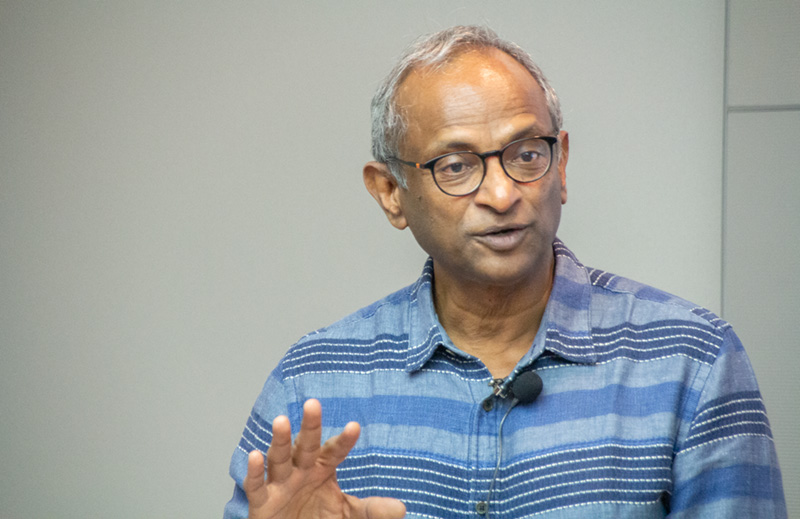
多彩な顔を持つ街・ベンガルール
みなさん、こんばんは。みなさんはベンガルールという街をご存知でしょうか。ベンガルールは多彩な顔を持つ街です。歴史は古く、9世紀に建てられた寺院には既にその名が刻まれています。
1900年代の半ばには、「Pensioner’s Paradise(年金生活者の天国)」と呼ばれるようになりました。気候がよくゆったりとした生活を過ごすことができる街であることから、仕事をリタイアした人たちにとって理想の街とされるようになりました。
ベンガルールは「Garden City」としても知られる、美しい庭園の街です。その起源はイギリス統治時代に遡り、オーストリアなどから大勢の庭師がやって来て庭園を作りました。
現代のベンガルールは「インドのシリコンバレー」としての顔を持ちます。また、「スタートアップの首都」とも言われます。ベンガルールから巣立ったユニコーン企業は数多く、日本のソフトバンクをはじめ、海外企業からの投資も活発に行われています。
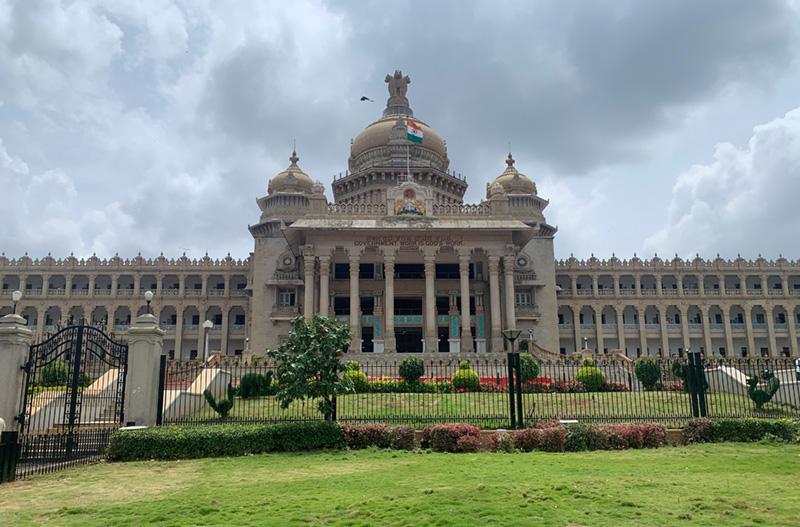
スタートアップがやがてエンジェルになり、次のスタートアップを支援
デザインを含む科学技術の発展に向け、その拠点となる場所を作ろうという動きは、1896年に始まりました。現在もよく知られているタタ財閥の創設者ジャムシェトジー・ヌッセルヴァーンジー・タタ氏が、科学大学の設立を構想したのです。当初は統治国であったイギリスからの反対を受けたのですが、1909年には大学設立の認可が下り、1911年には研究活動がスタートしました。この大学で学んだ学生たちが、後のインドの発展を支えていくことになります。
1950年代からは工業化が加速し、ベンガルールは製造業の研究拠点となりました。そして1980年代には、ITスタートアップが登場します。この時期に起業した人たちは、2010年代には投資家となって後輩起業家を支援する立場になっていきます。そして2010年代の起業家もやがては投資家となって次の世代の起業家を支えるという好循環が、ベンガルールでは起こっています。
1950年代から現在に至るまでの間に、ベンガルールは急速に発展しました。私がベンガルールへやって来た1984年当時、人口は320万人でした。それが現在では1360万人になっており、2033年には1700万人になると言われています。また、ある調査では2030万人になるとも予測されています。2000万人といえば、関西エリアと同じぐらいの人口になります。
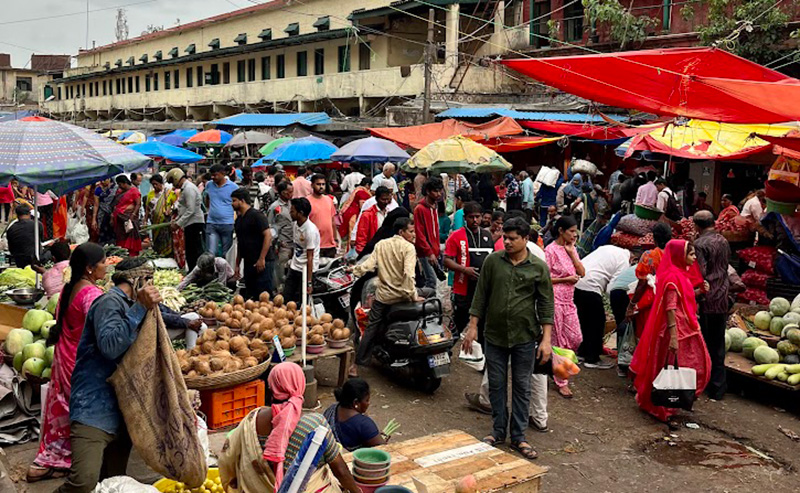
より良い未来を創造する「refuturing design」
都市の発展は負の側面ももたらしました。代表例が、大気や土壌の汚染、水不足、そして汚水です。私たちは、これらの社会課題の解決に向けて、デザインが役立つはずだと考えています。
デザインには「defuturing design」と「refuturing design」の2種類があります。従来のデザインはdefuturingです。ここでは、消費者に「買いたい!」と思わせることがデザインの主眼でした。しかしその結果としてもたらされたのが、現在の社会課題です。つまりdefuturing designは未来を奪ってしまうデザインであり、より良い未来をもたらしてくれることはないのです。
一方のrefuturing designは、より良い未来を創造するデザインです。例えばリサイクル素材を使った商品をデザインすることは、refuturing designです。繰り返し何度も使える商品がrefuturing designであり、一度しか使えない使い捨ての商品がdefuturing designの一例だと考えると、わかりやすいでしょう。
※「futuring」は、未来について考え、起こりうる結果を予測し、それに対応するための戦略や計画を立てる体系的なプロセスやアプローチのこと。「defuturing」は「脱未来」や「反未来」、「refuturing」は「再生」といった意味合いで使われる。
デザインを通してビジネスを変革する
ここからは私自身についてお話します。
私の父はインド出身で、シンガポールで働いていました。そこで母と結婚し、私が生まれました。私は、インド北部のPunjab(パンジャブ)州出身の女性と結婚し、2人の子どもと1人の孫がいます。孫の男の子はアメリカ人とスウェーデン人の血を引いていますし、パンジャブ系インド人、そしてマラヤ系インド人の血も引いていると言えます。シリア系キリスト教やカトリック、ヒンドゥー教、シーク教、さらにユダヤ教の流れもくんでいます。さまざまな背景を持つ国際人です。
私はインド国立デザイン大学でプロダクトデザインを学びました。当時、世界中の人との直接的・間接的な出会いが私の学びを豊かにしてくれました。日本人からも大きな影響を受けており、三宅一生、福岡正信、濱田庄司、ジョージ・ナカシマなどはその代表的な人物です。彼らの仕事にはスピリチュアル性を感じるものが多く、まるで宇宙とつながっているかのような仕事に大きな刺激を受けました。
大学在学中の1985年に会社を設立しました。木や金属を使った家具のデザインを手掛けていたのですが、私たちが希望する小ロットでの生産を引き受けてくれる会社がなかったのです。そこで、自分たちで会社を作ることにしました。この会社はデザイナー150人体制にまで成長しました。さらに他社との合併などを経て、最終的には250人のデザイナーを抱える会社になりました。インドの人口増大に伴い、多岐にわたる大型案件に対応可能で数もこなせる大規模なデザイン会社が必要とされるようになり、従業員が増えていったのです。

この会社では一貫して、「デザインを通してビジネスを変革する」ことを追求してきました。私たちはこれを、「ビジネスデザイン」と呼んでいます。例えば1980年代までのインドでは、他国や他社の製品をコピーすることで自社製品を作る「リバース・エンジニアリング」というビジネスが主流でした。それに対して私たちは、インドならではのものを生み出し、数々の「インド初」を作ってきました。南インド地方で朝食を作る際に用いられる石臼を製品化したり、全自動洗濯機をインド人の感性に寄り添ったデザインに作り変えるなどの仕事を手掛けました。また、仕事の領域をプロダクト以外にも拡大。店舗デザインの仕事では、富裕層に限定されていた客層を大衆にまで広げるという課題をデザインの力で解決することに挑みました。また、イギリス連邦の国々による総合競技大会である「コモンウェルスゲームズ2010」のロゴ、メダル、環境グラフィック、ビジュアルツールなども手掛けました。
医療検査のサービスを提供する会社の仕事は、「ビジネスデザイン」の考えをよく示す例です。この仕事では、検査に用いるイスなどのモノをデザインしただけでなく、「夜の利用は50%割引」「深夜2時から4時の利用は70%割引」など、価格体系をはじめとしたサービスの中身までデザインしました。これは、貧困層が医療サービスから取り残されているという社会課題の解決に貢献するためです。デザインの力を使うことで、貧しい人であっても医療サービスを利用できることをめざしたのです。
デザインの力で世の中の課題を解決し、社会にインパクトを与える
私たちは、次の7つの理念を掲げて活動をしています。
- 起業家精神をもってデザインする
- チーム、特に若手に対して権限を与え、信頼を置く
- 役割と報酬を公平に配分する
- デザインを通してあらゆることを民主化する
- 自身の文化に対して真摯である。インドらしくある
- 学際的・共創的アプローチを行う
- アクセスしやすく持続的なデザインを行う
2011年に設立したSpring Health Water (India) Pvt Ltdという会社は、これらの理念に基づく会社の1つです。同社は、安全な生活用水の提供を目的とした会社です。私たちは決して、利益の最大化をめざした事業は行いません。利益を確保しつつ、社会に対してインパクトのある事業を行うというのが、私たちの考え方です。
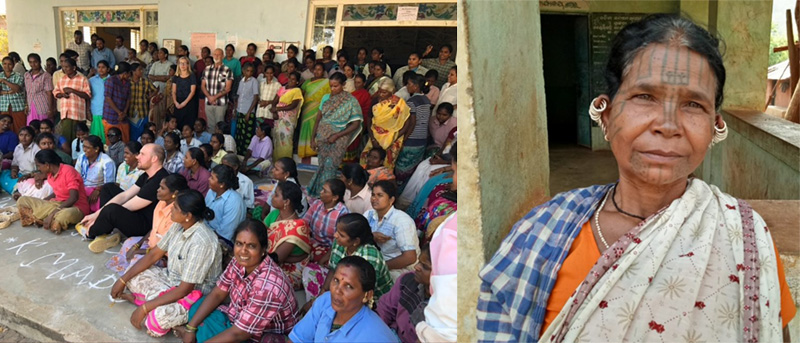
Industree Foundation(インダストリー財団)という組織は、女性の自立支援をめざした組織です。ここでは、女性が手工芸品を製作して販売することで収入を得ています。手にした収入でスクーターを購入した女性もいます。スクーターは移動の自由につながるため、非常に大きな意味を持ちます。インダストリー財団では部族の女性の支援も行っています。ある女性は、手工芸品の製作・販売によって月収を10倍にすることができました。販売にあたっては、ネット通販を利用しています。ポイントは、販売価格のうちの何パーセントが生産者の手にわたっているかが、サイト上で公開されていることです。これにより、公平な取引が行われ、消費行動が社会課題の解決に役立っていることを実感しながら商品を購入することができます。
デザインを積極的に活用する街・ベンガルール
ベンガルールには、数々の世界的なデザイン会社が拠点を置いています。インド国内で活動する著名なデザイン会社も、ベンガルールに拠点を置く会社が多いです。教育機関については、2022年時点で20の大学と250の組織がデザイン関連のプログラムを提供しています。
企業によるデザインの活用も活発です。TITANという時計や宝飾品の会社はその代表例です。デザインの先端企業として知られるEVバイクのメーカーであるATHERは、インドにおいてEVの総合的なエコシステムの構築に取り組んでいます。共同創業者がデザイナーでもあるEVバイクメーカーのUltraviolette Automotiveは、デザインと生産をベンガルールで行っています。ちなみに同社の共同創業者は日本のダイハツ工業で働いていた経験を持ちます。配車サービス大手のOLAは、EV生産の世界最大の工場を建設しています。なんとこの工場は、従業員全員が女性です。これもまた、社会課題をデザインの力で解決する取り組みです。
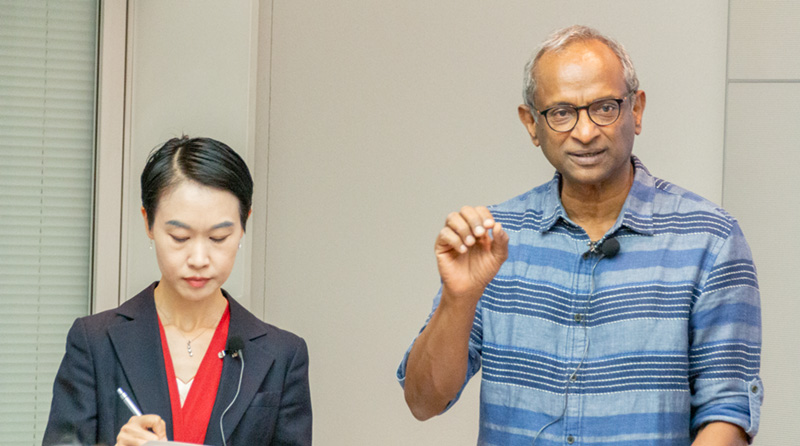
デザインで都市をポジティブに変えていく「プロトポリス」の取り組み
2011年に私は、スタンフォード大学で「デザインの未来」をテーマにしてクリエイティブ分野の教授陣とディスカッションをしました。そこで得た結論が、次の4つです。
- 消費におけるデザインの役割を見直さなければならない
- 資源の適切な利用をめぐってシステムが変革されていく
- デザインを重視する会社が付加価値を生み出していく
- クリエイティブインテリジェンス(CQ)が重要になる
AIは「クリエイティブの終わり」をもたらすとも言われています。一方で、「クリエイティブの始まり」になると言う人もいます。このような状況のなか、CQがデザイン、そして社会に対してインパクトを生み出せることは間違いないでしょう。
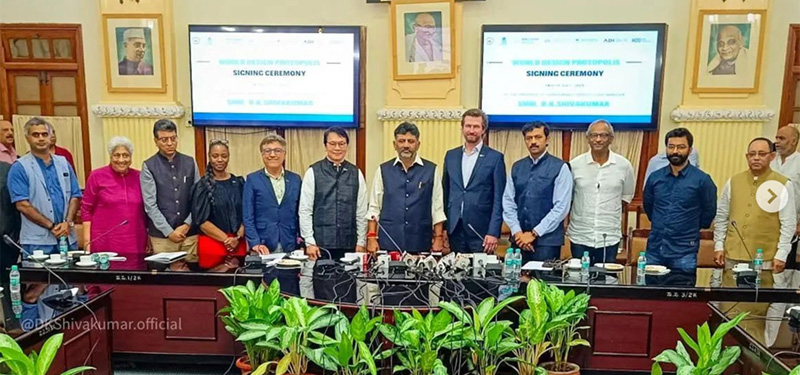
ベンガルールは、世界デザイン機構(WDO)によって「プロトポリス」に認定されています。プロトポリスとは、プロトタイプとメトロポリスの合成語。地域社会などにポジティブな変化を起こすためにデザインを活用していこう、国連が定めるSDGsと連携していこうなどといった目的が掲げられ、ベンガルールを舞台にして実践する取り組みです。
プロトポリスには次の6つのテーマが設けられています。
- Sustainable Bengaluru:水、ごみ、エネルギー、環境、気候変動などの問題への対応
- Build Bengaluru:インフラと交通の“ラスト1マイル”に関する問題への対応
- Creative Bengaluru:芸術・文化・遺産に関する都市としての取り組み。イベントとプロジェクションマッピングの融合、遺跡を舞台にしたVR、民族音楽や伝統工芸など
- Enterprising Bengaluru:テクノロジー、スタートアップ、サステナブルなビジネスに関する取り組み。企業誘致、起業促進など
- Safe & Healthy Bengaluru:女性、子ども、高齢者、障がい者、人以外の生物に対する、安全と幸福(well-being)に関する取り組み
- Future Now Bengaluru:変革のためのテクノロジーと若者に対する教育
また、今年12月1日から11日にかけて、音楽やアートなど300以上の催しからなる「UnBox BLR」というイベントの一環として「Bengaluru Design Week」がベンガルールで開催されます。来年にはさらに規模を拡大して開催予定ですので、ぜひご参加ください。
※世界デザイン機構(World Design Organization : WDO): 1957年、インダストリアルデザインの重要性を広く世界に提唱することを目的に設立された国際的なデザイン団体。現在、180以上の会員団体が加盟。
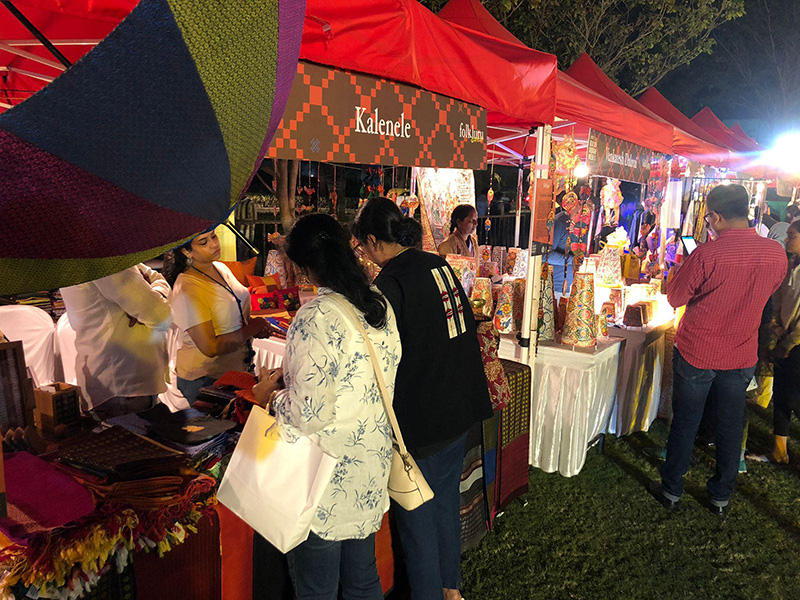
世界が手を携えてrefuturingなデザインの未来へ
プロトポリスはベンガルールを舞台にして行われますが、6つのテーマはベンガルールだけでなく、他の国や都市でも大切になっているものです。私たちは、ベンガルールで得られた経験を他の場所で応用することをめざしています。ですからみなさんにも、ベンガルールを訪れてもらい、取り組みをみなさん自身に体験してもらいたいです。そして、アイデアや意見を寄せてもらいたいです。プロトポリスの取り組みに興味がある方は、ぜひご連絡ください。
すでにお話ししました通り、ベンガルールのデザインはdefuturingではなくrefuturingの方向へ進もうとしています。Refuturingは再構築するデザインです。Refuturingなデザインの未来にたどり着くためには、耐えること(レジリエンス)と減らすことが重要です。レジリエンスとは、私たちを取り巻く状況の変化を受け入れ、対応していくことです。また、不確かな未来へ備えていくことです。減らすこととは、問題が起こってしまった際の影響を減らすという意味です。具体的には、消費至上主義の考え方が引き起こす問題への理解を深めたり、サステナブルな配慮をしたデザインを行う、サステナブルなエコシステムを構築する、再生・再利用に配慮するなどの取り組みが挙げられます。これはベンガルールだけで行えばいい取り組みではありません。ここ大阪も、そして世界も一緒になり手を携えて進んでいきましょう。
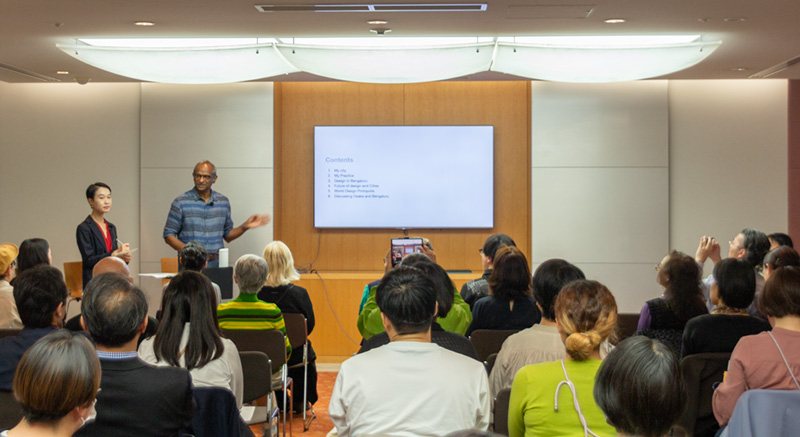
Solving Social Issues and Creating a Better Future through the Power of Design
“Impact Design” initiative in Bengaluru, India
Today, people’s lifestyles and values are diversifying. Many people may be asking themselves, “What can design do?” or “Where should design go?” Bengaluru (formerly known as Bangalore), a metropolis in southern India, is engaged in activities that may provide answers to these questions. MEBIC, which is working to strengthen ties with overseas cities and creators, held the “Creative Cluster Forum” as part of its efforts. Jacob Mathew, President of the Bengaluru Chapter of the Association of Designers of India and Industree Foundation Mentor, spoke about “Impact Design” and the future of design in Bengaluru. Shiho Sakaguchi, a Bengaluru resident with more than 10 years of experience as a coordinator between Japan and India, served as interpreter for the forum.

Bengaluru, a city with many faces
Good evening, everyone. Have you ever heard of the city of Bengaluru? Bengaluru is a city with many faces. It has a long history, and its name is already inscribed on a temple built in the 9th century.
In the mid-1900s, it was dubbed “Pensioner’s Paradise.” The city’s pleasant climate and relaxed lifestyle made it an ideal place for retirees.
Bengaluru, also known as the “Garden City,” is a city of beautiful gardens. Its origins date back to before the British colonial period when many gardeners, from include including one from Austria, came to Bengaluru to create gardens.
Today, Bengaluru is the “Silicon Valley of India.” It is also known as the “Startup Capital of the World.” Many unicorn companies have emerged from Bengaluru, and foreign companies, including Softbank from Japan, are actively investing in Bengaluru.

Startups eventually become angels, supporting the next startup
The movement to create a center for the development of science and technology, including design, began in 1896. Jamsetji Nusserwanji Tata, founder of the Tata conglomerates, still well known today, envisioned the establishment of a university of science. Despite initial opposition from the ruling British government, approval for the establishment of the university was granted in 1909, and research activities began in 1911. The students who studied at the university would later support India’s development.
From the 1950s, industrialization accelerated and Bengaluru became a research center for manufacturing. Then in the 1980s, IT startups appeared. Those who started businesses during this period became investors and supported junior entrepreneurs in the 2010s. And a virtuous cycle is taking place in Bengaluru, with entrepreneurs in the 2010s also eventually becoming investors and supporting the next generation of entrepreneurs.
From the 1950s to the present, Bengaluru has developed rapidly. When I came to Bengaluru in 1984, the population was 3.2 million. Today it is 13.6 million, and it is estimated to be 17 million by 2033. According to one survey, the population is expected to reach 20.3 million, which is about the same as the population of the Kansai area.

“Refuturing Design” to create a better future
Urban development has also brought negative aspects. Typical examples are air and soil pollution, water shortages, and sewage. We believe that design can help solve these social problems.
There are two types of design: “Defuturing Design” and “Refuturing Design.” Conventional design is defuturing. Here, the main focus of design was to make consumers “want to buy!” The result, however, is the current social issues. In other words, Defuturing Design is a design that takes away the future and does not bring about a better future.
Refuturing Design, on the other hand, is design that creates a better future. For example, designing a product using recycled materials is Refuturing Design. It is easier to understand if we think of products that can be used over and over again as Refuturing Design, and products that are disposable and can only be used once as an example of Defuturing Design.
※“Futuring” is a systematic process or approach to thinking about the future, predicting possible outcomes, and developing strategies and plans to deal with them. The term “defuturing” is used to mean “de-futuring” or “anti-futuring,” and “refuturing” means “regeneration.”
Transforming Business through Design
Let me start by telling you about myself.
My father was from India and worked in Singapore. He married my mother there and I was born there. I married a woman from Punjab, a state in the north of India, and we have two children and one grandson. I can say that my grandson is of American and Swedish descent, Punjabi Indian, and Malayalee Indian. Also, from religious point of view, Syrian Christianity, Catholicism, Hinduism, Sikhism, and Judaism. He is a boy with a mix of backgrounds, that make him a citizen of the world.
I studied product design at the National Institute of Design, India. At that time, my learning was enriched by direct and indirect encounters with people from all over the world. I have been greatly influenced by Japanese people, and Issey Miyake, Masanobu Fukuoka, Shoji Hamada, and George Nakashima are some of the most prominent figures. I was greatly inspired by their work, which often had a sense of spirituality, as if they were connected to the universe.
I founded my company in 1985 while still in college. We were designing furniture using wood and metal, but there were no companies willing to take on the small-lot production we wanted. So we decided to create our own company. This company grew to 150 designers. Through mergers with other companies, the company eventually grew to 250 designers. The size of India’s population demanded design companies at scale. This is why the number of employees grew to handle the size, scope and number of projects.

The firm has consistently sought to “Transform business through design.” We call this “business design.” For example, until the 1980s, the mainstream business in India was “reverse engineering,” in which companies made their own products by copying products from other countries or other companies. In contrast, we have created many “Indian firsts” by creating something unique to India. We have commercialized a millstone used for making breakfast in southern India, and redesigned a fully automatic washing machine to suit Indian sensibilities. He also expanded the scope of his work beyond products. In store design work, he took on the challenge of using the power of design to solve the problem of expanding the customer base, which had been limited to the wealthy, to the masses. We also worked on the comprehensive “look” of the Commonwealth Games 2010, including the logo, communications, environmental graphics, medals, etc.
Our work for a company that provides medical testing services is a good example of the idea of “business design.” In this work, we not only designed the chairs and other objects used for the examinations, but also the content of the service, including the pricing structure, such as “50% discount for evening use” and “70% discount for use between 2 am and 4 am.” This was done to contribute to solving the social issue of the poor people being left out of medical services. By using the power of design, we aimed to make medical services accessible even to the poor people.
Solving the world’s problems and impacting society through the power of design
We worked by the following seven principles
- Design with an entrepreneurial spirit
- Empower and trust our teams, especially younger people
- Distribute roles and rewards fairly
- Democratize everything we do through design
- Is sincere about its own culture. Be Indian.
- Take an interdisciplinary and co-creative approach
- Design in an accessible and sustainable way
A company called Spring Health Water (India) Pvt Ltd, established in 2011, is one of the companies based on these principles. The company is dedicated to providing safe water for domestic use. We are never in the business of maximizing profits. Our approach is to conduct business that has an impact on society while ensuring profits.

The Industree Foundation is an organization that aims to help women become self-reliant. Here, women earn income by making and selling handicrafts. Some women have purchased scooters with their earnings. Scooters are very significant because they lead to freedom of movement. The Industree Foundation also supports tribal women. One woman was able to increase her monthly income tenfold by making and selling handicrafts. She uses online shopping to sell her products. The key point is that the percentage of the selling price that goes to the producer is disclosed on the site. This ensures fair trade and allows customers to purchase products while realizing that their consumption behavior is helping to solve social issues.
Bengaluru, a city that actively utilizes design
Let me talk about the relationship between design and Bengaluru.
Bengaluru is home to a number of world-class design firms. Many prominent design firms operating in India are also based in Bengaluru. In terms of educational institutions, as of 2022, 20 universities and 250 organizations offer design-related programs.
The use of design by companies is also very active, with TITAN, a watch and jewelry company, being a prime example. ATHER, a manufacturer of EV motorcycles and a leading design company, is working to create a comprehensive ecosystem for EVs in India. Ultraviolette Automotive, an EV motorcycle manufacturer whose co-founder is also a designer, designs and manufactures in Bengaluru. The company’s co-founder previously worked for Daihatsu Motor Co. in Japan. OLA, a leading car-delivery service provider, is building the world’s largest EV production plant. To my surprise, all the employees at this plant are women. This is another initiative to solve social issues through the power of design.

Ms. Sakaguchi, an interpreter, came to India after working for a venture capital firm in Japan, where she was involved in entrepreneurship development and collaboration between venture companies and large corporations. Currently based in Bengaluru, She supports business development of Japanese companies in an accompaniment style.
“Protopolis” is an initiative to positively transform cities through design.
In 2011, I had a discussion with professors in the creative field at Stanford University on the theme of “The Future of Design.” The following four conclusions were reached there.
- The role of design in consumption must be rethought
- The system is being transformed around the proper use of resources
- Design-oriented companies will create added value
- Creative Intelligence (CQ) will become important
AI is said to bring about the “end of creativity.” On the other hand, others say it will be “the beginning of creativity.” Under these circumstances, there is no doubt that CQ can create an impact on design and society.

Bengaluru is recognized as a “Protopolis” by the World Design Organization (WDO). “Protopolis” is a compound word of prototype and metropolis. Protopolis is an initiative to put into practice in Bengaluru, with the aim of utilizing design to bring about positive change in local communities, and to work with the SDGs set forth by the United Nations.
Protopolis has the following six themes
- Sustainable Bengaluru: addressing issues such as water, waste, energy, environment, and climate change
- Build Bengaluru: addressing issues related to the “last mile” of infrastructure and transportation
- Creative Bengaluru: a city initiative on arts, culture and heritage. Fusion of events and projection mapping, VR in archaeological sites, folk music and traditional crafts, etc.
- Enterprising Bengaluru: Initiatives related to technology, startups, and sustainable business. Attracting companies, promoting entrepreneurship, etc.
- Safe & Healthy Bengaluru: Initiatives related to safety and well-being for women, children, the elderly, the disabled, and non-human life forms.
- Future Now Bengaluru: Technology for Change and Education for Youth
In addition, Bengaluru Design Week as the UnBox BLR event will be held in Bengaluru from December 1-11 this year, featuring more than 300 events, including music and art. The event will be expanded next year, and we look forward to seeing you there.
※World Design Organization (WDO): An international design organization founded in 1957 to advocate the importance of industrial design to the world at large. Currently, more than 180 member organizations are affiliated.

The world joins hands for the future of Refuturing Design
Although Protopolis is set in Bengaluru, the six themes are important not only to Bengaluru, but also to other countries and cities. We aim to apply the experience gained in Bengaluru to other places. So we invite you to visit Bengaluru and experience the initiatives for yourselves. We want you to visit Bengaluru, experience the initiative for yourselves, and send us your ideas and opinions. If you are interested in the Protopolis initiative, please contact us.
As I have already mentioned, Bengaluru design is moving in the direction of refuturing, not defuturing, and refuturing is design that restructures. To arrive at a future of Refuturing Design, it is important to endure (resilience) and to reduce (reduction). Resilience means accepting and responding to the changing circumstances that surround us. It is also about preparing for an uncertain future. Reducing means reducing the impact of problems when they occur. Specifically, this means a better understanding of the problems caused by consumer supremacy, designing with sustainable considerations, building sustainable eco-systems, and taking into account recycling and reuse. This is not an initiative that can be done only in Bengaluru. Let’s join hands and move forward together here in Osaka and around the world.

Event Summary
Bengaluru, India “Impact Design” Initiative
Creative Cluster Forum
MEBIC has been working to establish connections with overseas creators and design institutions to help creators understand cultures and ways of thinking about creativity that differ from their own, and to broaden the scope of their own creative activities.
This time, a guest speaker is Jacob Mathew, a long-time business and social reformer from Bengaluru in the southern Indian state of Karnataka, who has been working on business and social change based on the philosophy of “impact design,” which approaches sustainability and solving social issues by focusing not only on appearance and function, but also on the impact of products on people’s lives and the environment. Jacob will be our guest speaker.
Bengaluru, known for its agglomeration of IT industry, has also been focusing on urban and social transformation through design in recent years, and in July this year, was recognized by the World Design Organization as a pilot project city for the World Design Protopolis (WDP) to create design projects that will improve the quality of life for citizens. The city was recognized as a pilot project city by the World Design Organization.
Jacob, who has led the Indian design industry as a social entrepreneur and educator, will talk about his design philosophy, how the city of Bengaluru was selected for the WDP and the Bengaluru Design Week※, annual event in Bengaluru.
After the event, a reception will be held with the panelists, so please join us!
Date:
Jacob Mathew
Mentor, Industree Foundation
Senior Design Principal, Srishti Manipal Institute
President of Bengaluru Chapter, Association of Designers of India
World Design Protoplis Team Member
Studied product design at the National Institute of Design, India, and in 1985 co-founded Tessaract Design (later Idiom Design and Consulting LTD / 2005-2021), which played an important role in the development of the Indian retail industry. For nearly 25 years, he worked to transform business through design. In 2011, he co-founded Spring Health Water (India) Pvt Ltd, a social enterprise that provides safe drinking water to rural India, and also the director of the Impact Edge Lab at Srishti Manipal Institute of Art Design and Technology, a design education institute, and a mentor for the Industry Foundation, which works to address women’s poverty issues. In recent years, he has been using business, design, and entrepreneurship to contribute to social change in India and Africa from the base of the economic pyramid.
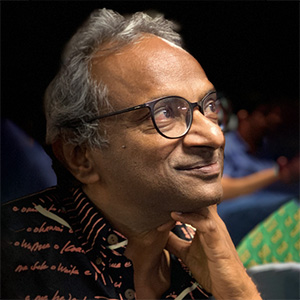
Shiho Sakaguchi
Lives and works in Bengaluru. She has 10 years of experience as a coordinator between Japan and India. After working for 13 years in Japanese venture capital firms as a manager of investment development, fund establishment and management, business alliances, and incubation, she moved to Bengaluru, India. She has been supporting business development of Japanese companies in an accompaniment style by utilizing her network and business model building skills cultivated in the region. she is particularly passionate about promoting technology collaboration between Japan and India.

Publish: December 25, 2023
Writer: Morihisa Matsumoto (Willberries)
Listed information is based on information available at the time of publication.
イベント概要
インド・ベンガルール「インパクト・デザイン」の取り組み
クリエイティブクラスターフォーラム
メビックでは、海外のクリエイターやデザイン機関とのつながりを構築することで、クリエイターが、自国とは異なる文化やクリエイティブに対するとらえ方、考え方について理解し、各自のクリエイティブ活動の幅を広げることに役立つ活動を行っています。
今回は、インド南部カルナータカ州のベンガルール市(旧称:バンガロール)で、単に外見や機能だけでなく、人々の生活や環境に与える影響に焦点を当て、社会課題解決やサステナビリティにアプローチする「インパクト・デザイン」の理念のもと、長年、ビジネスや社会変革に取り組むジェイコブ・マシュー氏をゲストにお招きします。
IT産業の集積地として知られるベンガルールは、近年ではデザインによる都市・社会の変革にも力を注いでおり、今年7月、世界デザイン機構(WDO)から、市民生活の質の向上につながるデザインプロジェクトを創出するための「ワールド・デザイン・プロトポリス(WDP)」のパイロットプロジェクト都市として認定されました。
社会起業家、教育者としてもインドのデザイン業界を牽引してきたジェイコブ氏に、自身のデザイン哲学や、また、WDPに選定された経緯、ベンガルールで毎年開催されている街を挙げてのデザインフェスティバルなどベンガルール市の現状についてもお話しいただきます。
イベント終了後は、パネラーも交えて懇親会を開催しますので、ぜひこちらもあわせてご参加ください。
開催日:
Jacob Mathew氏(ジェイコブ・マシュー)
インダストリー財団(Industree Foundation)メンター
スリシュティ・マニパール・インスティテュート(Srishti Manipal Institute)シニア・デザイン・プリンシパル
インド・デザイナー協会 ベンガルール支部長
インド国立デザイン大学(National Institute of Design)でプロダクトデザインを学び、1985年、インドの小売業界の発展に重要な役割を果たしたTessaract Design(後のIdiom Design and Consulting LTD / 2005-2021)を共同設立。約25年にわたり、デザインによるビジネスの変革に取り組む。その後、2011年にはインドの農村部に安全な飲料水を供給する社会的企業Spring Health Water (India) Pvt Ltdを共同設立し、また、デザイン教育機関であるSrishti Manipal Institute of Art Design and TechnologyのImpact Edge Lab所長、女性の貧困問題に取り組むインダストリー財団メンターを務めるなど、近年では、ビジネス、デザイン、起業家精神を活用し、経済ピラミッドの底辺からのインド・アフリカの社会変革に貢献している。「ワールド・デザイン・プロトポリス」チームメンバー。
https://srishtimanipalinstitute.in/
https://www.industree.org.in/

阪口史保氏(さかぐち しほ)
Hoshitry Impact LLC 代表パートナー
べンガルール在住。日本とインド両国を結ぶコーディネーターとして10年の経験を持つ。 日本のベンチャーキャピタルにて13年間にわたり、投資育成、ファンド設立・運営、ビジネスアライアンスまたインキュベーションマネージャーとして起業家育成やベンチャー企業と大企業間の連携に取組んだ後、インド・べンガルールに移転。現地で培ったネットワークとビジネスモデル構築力により日本企業の事業開発を伴走型で支援。特に日本とインドの技術連携を推進することに情熱を持って取り組んでいる。

公開:
取材・文:松本守永氏(ウィルベリーズ)
*掲載内容は、掲載時もしくは取材時の情報に基づいています。
